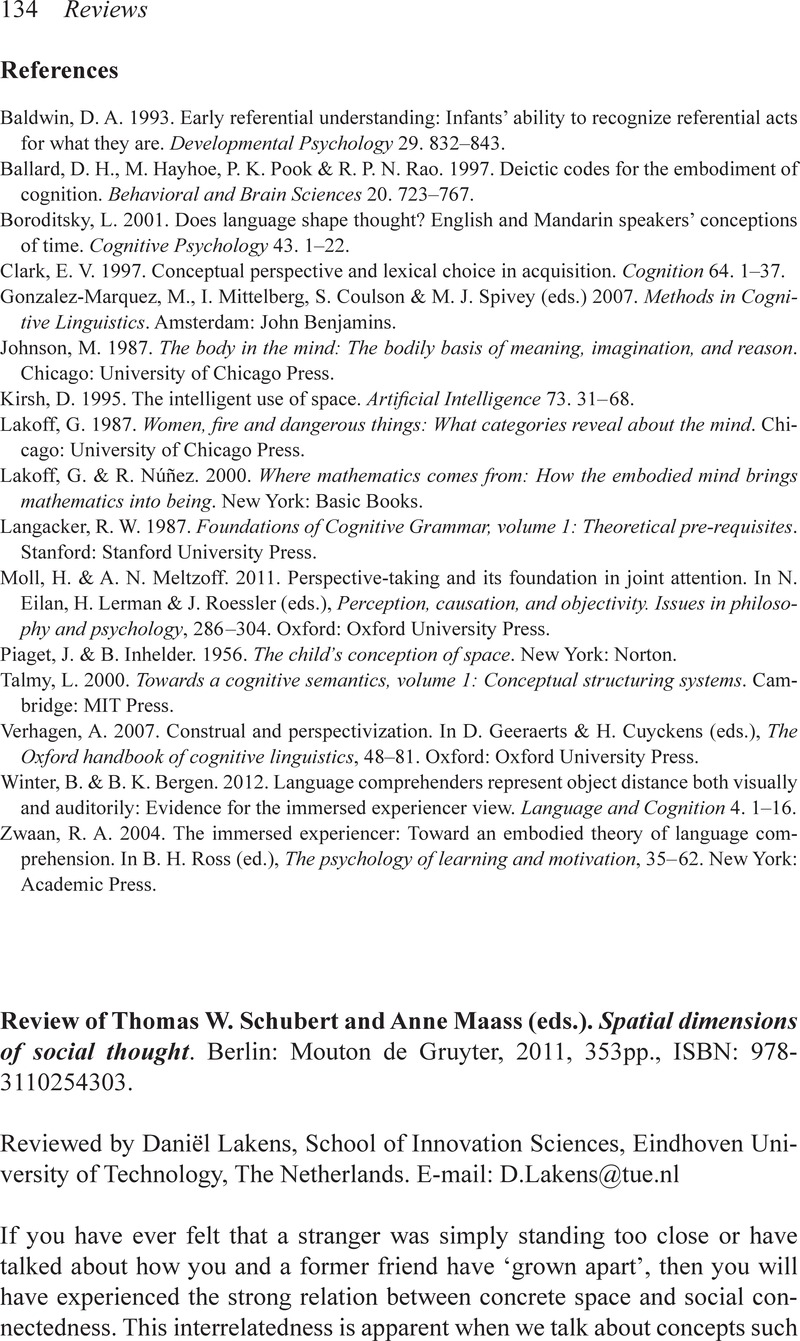No CrossRef data available.
Article contents
Review of Thomas W. Schubert and Anne Maass (eds.). Spatial dimensions of social thought. Berlin: Mouton de Gruyter, 2011, 353pp., ISBN: 978-3110254303.
Review products
Review of Thomas W. Schubert and Anne Maass (eds.). Spatial dimensions of social thought. Berlin: Mouton de Gruyter, 2011, 353pp., ISBN: 978-3110254303.
Published online by Cambridge University Press: 11 March 2014
Abstract
An abstract is not available for this content so a preview has been provided. Please use the Get access link above for information on how to access this content.

Information
- Type
- Reviews
- Information
- Copyright
- Copyright © UK Cognitive Linguistics Association 2012
References
Boroditsky, L. 2000. Metaphoric structuring: Understanding time through spatial metaphors. Cognition 75. 1–28.Google Scholar
Cacioppo, J. T., Priester, J. R. & Berntson, G. G.. 1993. Rudimentary determinants of attitudes. II: Arm flexion and extension have differential effects on attitudes. Journal of Personality and Social Psychology 65. 5–17.Google Scholar
Kirsh, D. 1995. The intelligent use of space. Journal of Artificial Intelligence 73. 31–68.Google Scholar
Gattis, M. (Ed.) 2001. Spatial schemas and abstract thought. Cambridge, MA: MIT Press.Google Scholar
Lakoff, G. & Johnson, M.. 1980. Metaphors we live by. Chicago: University of Chicago Press.Google Scholar
Lakens, D., Semin, G. R. & Garrido, M.. 2011. The sound of time: Cross-modal convergence in the spatial structuring of time. Consciousness and Cognition 20. 437–443.Google Scholar
Meier, B. P. & Robinson, M. D.. 2004. Why the sunny side is up: Association between affect and vertical position. Psychological Science 15(4). 243–247.CrossRefGoogle ScholarPubMed
Santiago, J., Ouellet, M., Román, A. & Valenzuela, J.. In press. Attentional factors in conceptual congruency. Cognitive Science.Google Scholar
Schneider, I. K., Rutjes, B., Jostmann, N. B. & Lakens, D.. 2011. Weighty matters: Importance literally feels heavy. Social Psychological and Personality Science 2. 474–478.Google Scholar
Varela, F., Thompson, E. & Rosch, E.. 1991. The embodied mind. Cambridge, MA: MIT Press.Google Scholar
Woelert, P. 2011. Human cognition, space, and the sedimentation of meaning. Phenomenology and the Cognitive Sciences 10. 113–137.CrossRefGoogle Scholar

